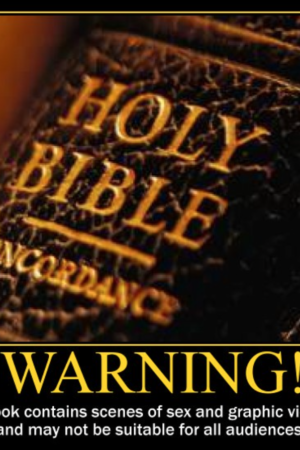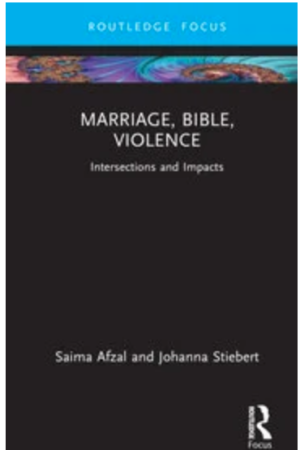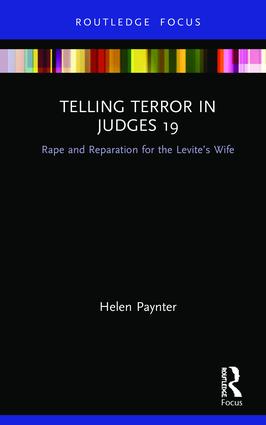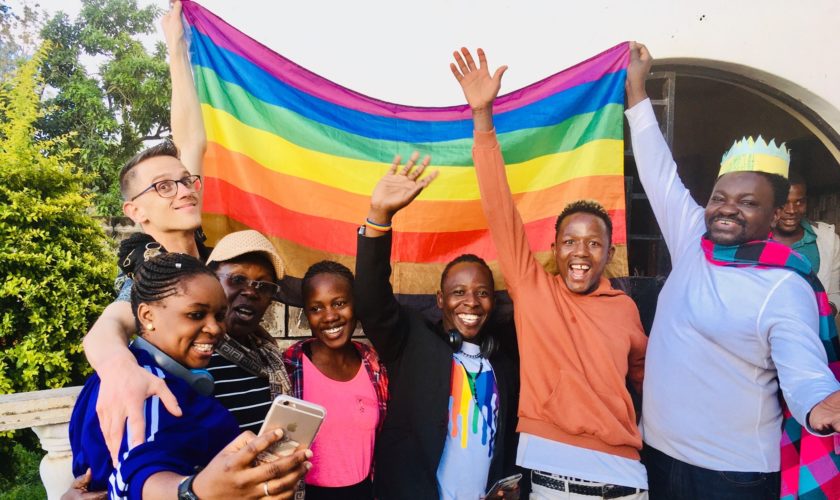Reflection on and review of The #MeToo Reckoning: Facing the Church’s Complicity in Sexual Abuse and Misconduct, by Ruth Everhart (Downers Grove, IL: InterVarsity Press, 2020).
This is not the kind of book I usually pick up – but I’m glad I did. Why might I not have picked it up? The author, Ruth Everhart, is a Presbyterian pastor, and she writes of Jesus as a presence and of the Bible as instrumental in addressing sexual abuse and misconduct in today’s churches. I am not drawn to church, and for me, doing something ‘because of Jesus’ (the title of one sub-section early on in the book), or treating the Bible as a kind of how-to for protecting the most vulnerable (signified by ‘the little ones’ of Matthew 18), as much as I applaud Everhart’s purpose, is utterly unfamiliar. Like humanizing one’s pets, or talking to the dead, I see nothing wrong in theory with believing in Jesus’ active presence, but at the same time it’s just not ‘me’.Moreover, I’ve tended to see the Bible as more part of the problem in matters sexual abuse than part of the solution.
Some of Everhart’s writing struck me as too ‘churchy-preachy’ to warm to. Hence, I almost put the book away when I got to, ‘[Jesus’] love changes everything. He is the divine one who came into this world via vagina. To Jesus, women’s bodily experiences matter. To Jesus, all humans bear the image of God equally. To Jesus, the voices of victims crying out for justice is a beatitude sung by a chorus. Stop and listen. Push past the fear. Unleash the energy. The Spirit is here’ (p.15). But I pushed past, persevered, perhaps in part, because Everhart had said at the outset that the book was addressed to victims, survivors, allies of victims and survivors, pastors, lay leaders and also to non-Christians.
I had ordered Everhart’s book, because I came across it as forthcoming while researching my own book on rape culture and #MeToo. In my book I make much of the enduring influence of biblical texts, particularly in faith communities. And yet, can I really say this with authority, given my own remove from such communities? I preordered Everhart’s book and began to read it soon after it arrived, hot off the press. It is a book that – much to my own surprise – engaged me; a book I admire and warmly recommend. It has taught me much and given me some insight into new perspectives. Here are a few things I particularly like about this book.
Everhart knows what she is talking about and sticks to what she knows
Everhart is a rape survivor. She has written a memoir about her ordeal, when she and her roommates, all young students at a Christian college, were held at gunpoint and raped by two intruders. The memoir is called Ruined(Tyndale House, 2016), because this word captured her perception of herself following the rape. Feeling ruined can be traced back in part to the purity culture in which Everhart was raised and immersed. Her intimate understanding of both purity culture and of trying to understand rape against the backdrop of faith in a loving God also contributes to her acutely sensitive and empathetic depiction of the stories of others who have encountered sexual abuse and mistreatment in church settings: like Melissa, raised and home-schooled in a conservative Christian culture that deprived her of the language to disclose or speak about rape; Stephanie, the pastor who had to recognize and resist the sexism that was creating a rape-supportive environment in her own faith community; Kris, the young man exposed to a sexual abuser who was protected by church structures and secrecies.
Ruined follows Everhart’s spiritual journey moving through and past rape, past feeling ruined, and her choice of remaining in the church and following her calling to become a pastor. I have not read Everhart’s memoir, only her allusions to it in this book. Like other first-person accounts of rape, Everhart’s albeit brief descriptions stay with me. The two book-length autobiographical accounts of rape I have read – and yes, sadly, rape memoirs are a genre – are Jill Saward’s Rape: My Story (Bloomsbury, 1990) and Joanna Connors’ I Will Find You: A Reporter Investigates the Life of the Man Who Raped Her (Fourth Estate, 2016).
With both of these accounts, as with Everhart’s, the victim is easily identified as ‘innocent’. Of course no victim of rape is anything other than blameless; rape is always a dreadful crime, regardless of who the victim is. But it is no revelation that not all rape victims receive sympathy or support. Instead, some victims are blamed – on account of being drunk, or being perceived to have been sexually provocative, for instance. There exists a hierarchy of respectability with some victims deemed ‘more innocent’ and ‘more undeserving’ and others as‘rapable’, their violation ‘understandable’, occasionally even deserved.
This hierarchy is amply infused with perceptions regarding purity, as well as with racism and other forms of discrimination pertaining to class, for instance. Moreover, it is affected by the identity of both victim and perpetrator – and Everhart is well aware of these toxic dynamics. Early on she alludes to the inequalities of rape, including those pertaining to race (pp.7-8), which she returns to repeatedly (e.g. p.49, pp.222-23). Everhart also unpicks the subtle workings of purity culture and its intersections with rape culture (pp.108–32) and the multiple vulnerabilities of class-based inequalities (passim).
Everhart, Saward and Connors’ accounts are all by white women. Everhart and Saward were both very young at the time of their rapes and both were devout Christians – Everhart a student at a Christian college, Saward a vicar’s daughter. In all three cases the rapists were strangers, in two (Everhart’s and Saward’s) there was more than one rapist and the rapists were armed intruders. In both Everhart and Connors’ cases the rapists were black men. All of these factors – that the rape victims were young, white, Christian, and the assailantsviolent, armed, black, strangers – serve to render the victims ‘more innocent’ in terms of the hierarchy of respectability and the rapists ‘more deplorable’ in the hierarchy of perpetrators than if the victims had been black, sexually experienced, older, or sex workers, for instance, or if the rapists had been their victims’ husbands, acquaintances, or famous, handsome, white.
This is due to networks of rape myths and how theseshape stereotypes, expectations, prejudices, values and it explains why some rapists – such as good-looking, or wealthy, white men, boyfriends or celebrities – are more likely to get away with rape and why black victims, or sex workers, or disabled victims while, according to statistics especially vulnerable to sexual violence, more often than not do not get a hearing, let alone justice in court, or even representation or acknowledgement of their disproportionate suffering in popular culture.
Everhart comprehends this fully and reflects this in her writing. She chooses, however, wisely in my view, to hone in on the rape culture context she knows and understands best. As she writes, ‘Because I have become a progressive Protestant, this book focuses on stories within that world. I feel a call to clean the dirt in my own house…’ (p.9). Everhart makes no bones about who she is – ‘a rape survivor… a former “good girl,” … a radical feminist’ (p.6) and she takes a clear-eyed look at the church to which she belongs and feels indebted but which she also recognizes as ‘the culprit… the place where culpability hides’ (p.4).
The book contains a variety of stories and gives insight into the complex reasons why abuse is common in churches
This book is substantial in length and demonstrates considerable narrative agility. It combines accounts ofEverhart’s personal experience, stories of others who have encountered church complicity in sexual abuse and misconduct, news reports (including about the testimony of both Anita Hill and Christine Blasey-Ford), excerpts from written correspondences, and careful examinationsof a wide range of biblical texts: among these, Leviticus 15 (detailing the menstruation purity laws), Numbers 27 (about the daughters of Zelophehad), 2 Samuel 11–13(the stories of Nathan’s parable and the rapes of both Bathsheba and Tamar), Psalm 55, the book of Lamentations, Matthew 10 and 18 (about Jesus and the children, or ‘little ones’), Mark 5:21-43 (the stories of two daughters – Jairus’ daughter and the woman healed of a continuous discharge), Luke 18 (the story of a persistent widow – a text I hadn’t known about prior to reading Everhart’s book), and 1 Corinthians 12 (on theinter-dependent body of the Church).
Everhart is superb at telling and at connecting stories that show in multiple ways that churches foster environments in which sexual misconduct and abuse thrive. She tells her own story, of working in a new congregation and of the inappropriate attentions of a church leader, culminating in his forcibly kissing Everhart. She talks of her efforts first to forestall and then to address this incident and of the many obstructions she encountered. She speaks of how this revived past trauma and also, how her past trauma was used against her.
Alongside this, Everhart tells others’ stories that have been entrusted to her. Some of these describe cases of severe physical abuse (Melissa’s rape by two men, one a stranger, one a trusted friend from church; Kris’s violent assault by a church-assigned chaperone), others of apparently less serious encounters (the misogynybrewing in Stephanie Green’s congregation). Skillful and effective here is how Everhart constructs a church-specific picture of a rape culture pyramid, in which it isclear that the serious crimes that happen in church settings (and which have begun to make the news with horrible regularity) are under-shored by networks and tributaries of rape-supportive attitudes, complicities and suppressions. As Everhart argues persuasively, none of these, even if seemingly small or jocular, are harmless and – if left unchallenged – transpire in the protection of abusers and the multiplication of victims. Atmospheres where sexist jokes are accepted as ‘banter’ diminish and silence women; small sexualized transgressions when dismissed can embolden perpetrators. Everhart tells of the sexualized ‘jokes’ of Big Joe, which go on to influence a vulnerable attendee of his soup kitchen, who then begins to stalk Stephanie, and of Ginni, who is tooready to forgive a sexual predator in spite of his not taking accountability or accepting any punishment. Everhart’s stories are vivid and familiar – even to those not part of a church community. This is because the church setting she describes is a microcosm that, for all its distinctive features, echoes broader social patterns.
Everhart’s examinations of biblical texts are also compelling – and here I feel on more familiar ground. I, too, have interfaced biblical texts with contemporarycontexts. Everhart describes her approach as hearing stories of the Bible and the present ‘in tandem, the twin halves of a double helix’ (p.11). She uses the Bible as an inspiration for seeking justice: Jesus’ advocacy for ‘the little ones’ calls her to speak for victims and survivors and to heal the church; she appeals to David’s exposure of guilt, as well as to his acknowledgement of fault and acceptance of punishment to act as a model for seekingperpetrators’ accountability.
But Everhart is not uncritical of the Bible by any means. Hence, she notes, for instance, David’s mourning for his sons, Amnon and Absalom, but not for Tamar, his daughter: ‘David’s silence speaks volumes: Tamar’s life is not equal in value to those of her brothers. How painful to be confronted with the sheer expendability of females in Scripture – yet this is our religious heritage’ (p.34). Everhart finds inspiration in the Bible – for women’s solidarity in the story of Zelophehad’sdaughters, and for persistence in seeking justice in the parable of the widow and the judge – but she is not blind to the Bible’s misogyny and she is aware of how it has been used against women.
Everhart has clearly studied and reflected on the Bible in considerable depth. I have too – but I learned from Everhart. I found her reflection on the ewe lamb in Nathan’s parable insightful, for instance. Hence, Everhart suggests that the man’s affection for the lamb might point to a particularly tender relationship between Uriah and Bathsheba. I did not know and agree with Everhart that it is meaningful, that Bathsheba, though not named here, is referred to as the wife of Uriah in the New Testament (Matthew 1:6). I also concur that the image of the lamb emphasizes Bathsheba’s youth and vulnerability: Everhart asks, ‘Due to stark disparities in status, power, and age, was meaningful consent possible in the story of David and Bathsheba?’ (p.144) We are agreed that the story is one of rape.
Everhart’s adept and lively narration of stories – both personal and biblical – makes this book enjoyable to read. Her careful analysis of texts from the Bible is balanced with vividly related accounts of actual people from her own circle. The parallels between the two make the Bible stories relevant and alive but without obscuring their toxic potential. As Everhart recognizes ‘Scripture says many things, including many contradictory things. … We must be aware of the temptation to “baptize” what feels good and right because it’s known and comfortable’ (p.36). Everhart avoids this temptation and delves into much that is uncomfortable and painful.

The book not only identifies and explains problems but offers hope and church-compatible ways and incentives to resolve them
Everhart is clear where she stands: she is in the church and intends to remain there. She recognizes the church’s potential for facilitating abuse and wants to be part of the solution for bringing this to an end. She is motivated by feminism and enthusiastic about #MeToo, identifying it as a time to speak up and to bring the church into a movement for positive change.
Among the problems Everhart identifies and seeks to resist are Christian complicity ‘in championing a patriarchal masculinity that marginalizes women and protects abusers’ (p.11); the manipulation of turning the willing sacrifice of Jesus into the exploitation of self-sacrifice, or into sacrifice of the truth (p.35, p.204); the prevalence of a purity culture and a conservative view on sexuality, which can prepare a seedbed for driving sexual abuse underground; the church’s ‘tremendous pull toward institutional self-preservation’ and the ‘intricate web of relationships within the church’ (p.53); and disciplinary processes that do not acknowledge, let alonehonour harms done (p.90ff., 104–06).
Over and over again, Everhart, while drawing on discrete examples, agues that these problems lie not with a few ‘sick individuals’ but with systems (e.g. pp.80-81). She advocates for transparency and speaking out (p.106) and for making churches ‘safer and braver’ (p.212). Hence, rather than holding meetings about abuse behind closed doors or foregrounding privacy and anonymity, Everhart advocates for public laments, in line with the large-scale, public strategies of #MeToo. Shame, she points out, lies not with victims but with perpetrators and resisting sexual abuse is not a women’s issue but a human issue. Without active resistance, she warns, churches will lose all the remaining trust they still have and go under.
Everhart’s book ends on a note of hope, optimism and activity – with a list of strategies for effecting positive change within congregations.
I was left, after reading this book, feeling sombre but also more knowledgeable, and very grateful for people like Everhart and others, including several who have featured on this blog – Jayme Reaves, Rosinah Gabaitse, Musa Dube, David Tombs, Megan Robertson, Laurie Lyter-Bright, Helen Paynter, Joachim Kuegler, Gerald West, Ericka Dunbar, Joyce Boham, Jo Sadgrove… – for fighting the fight in the churches.
I hope many of you will read this book, whether you are Christian, church-going, or not.






























